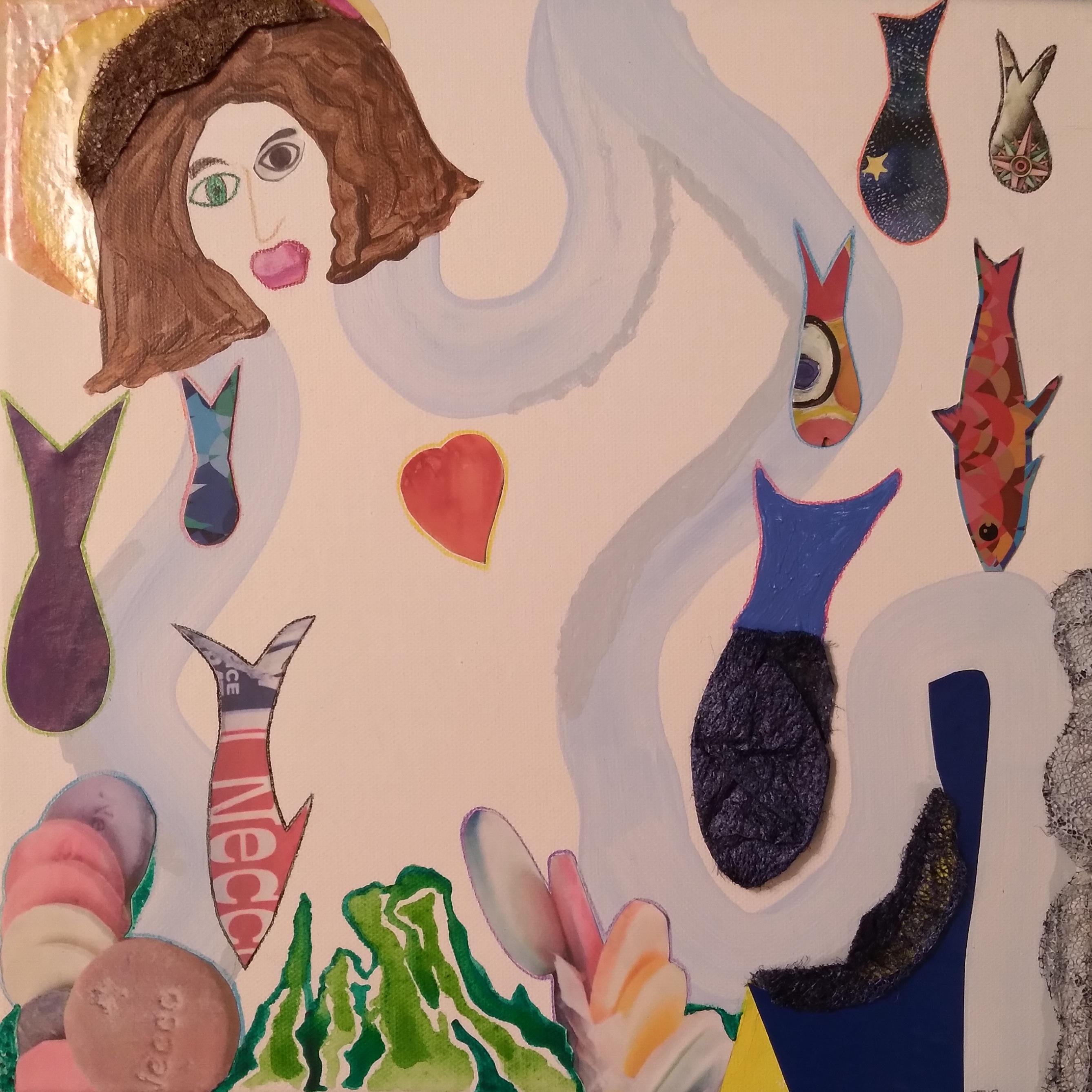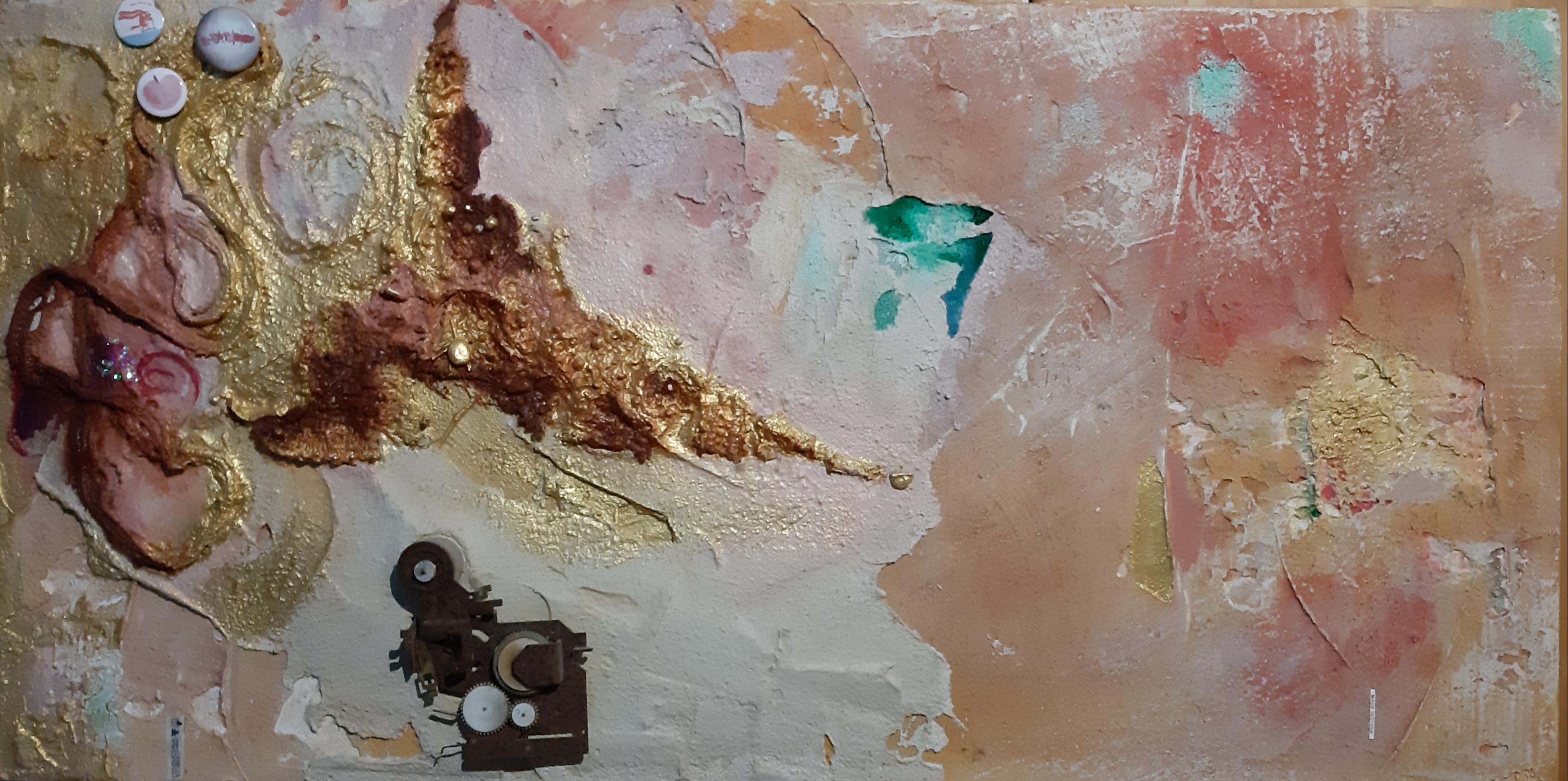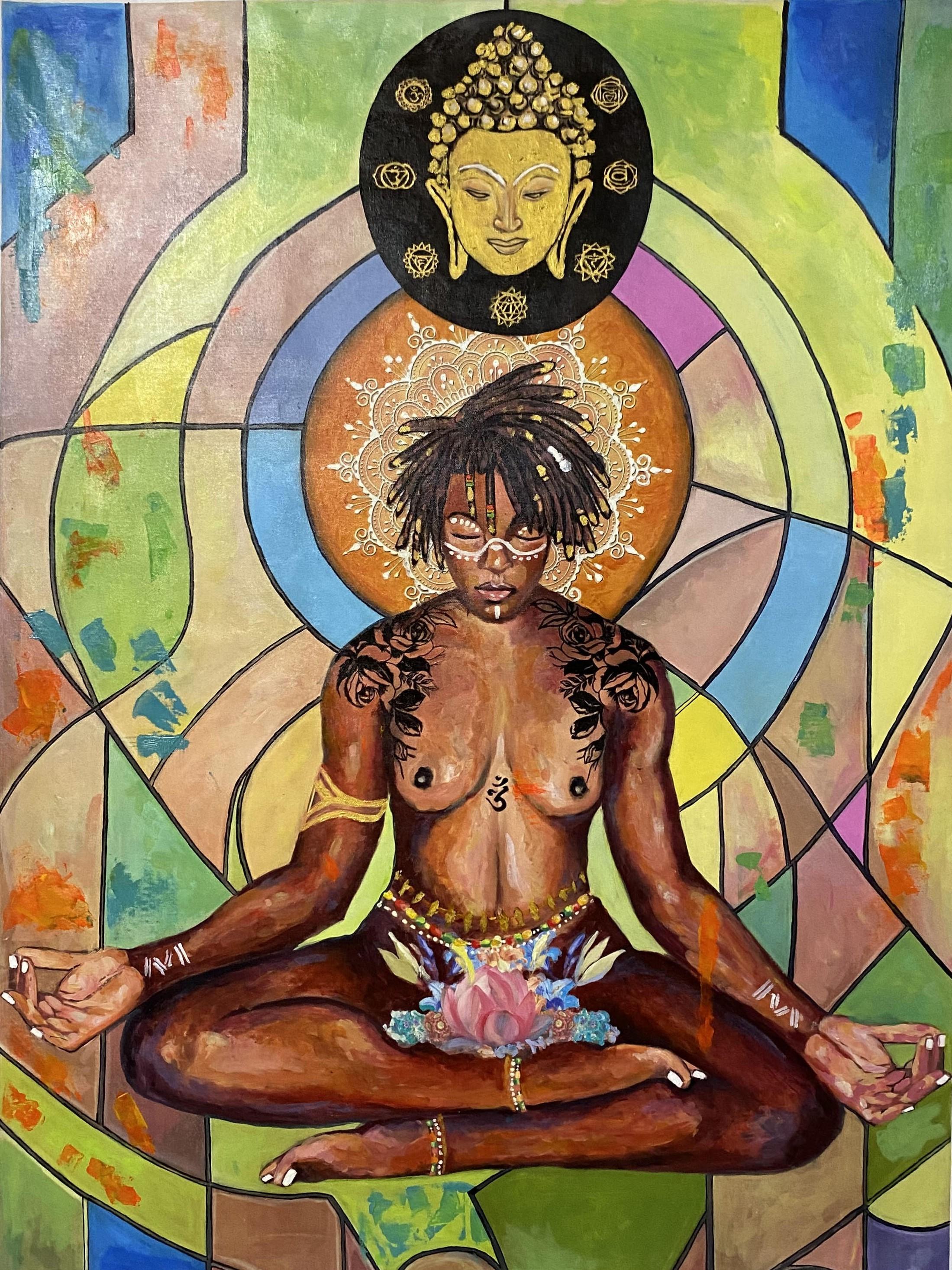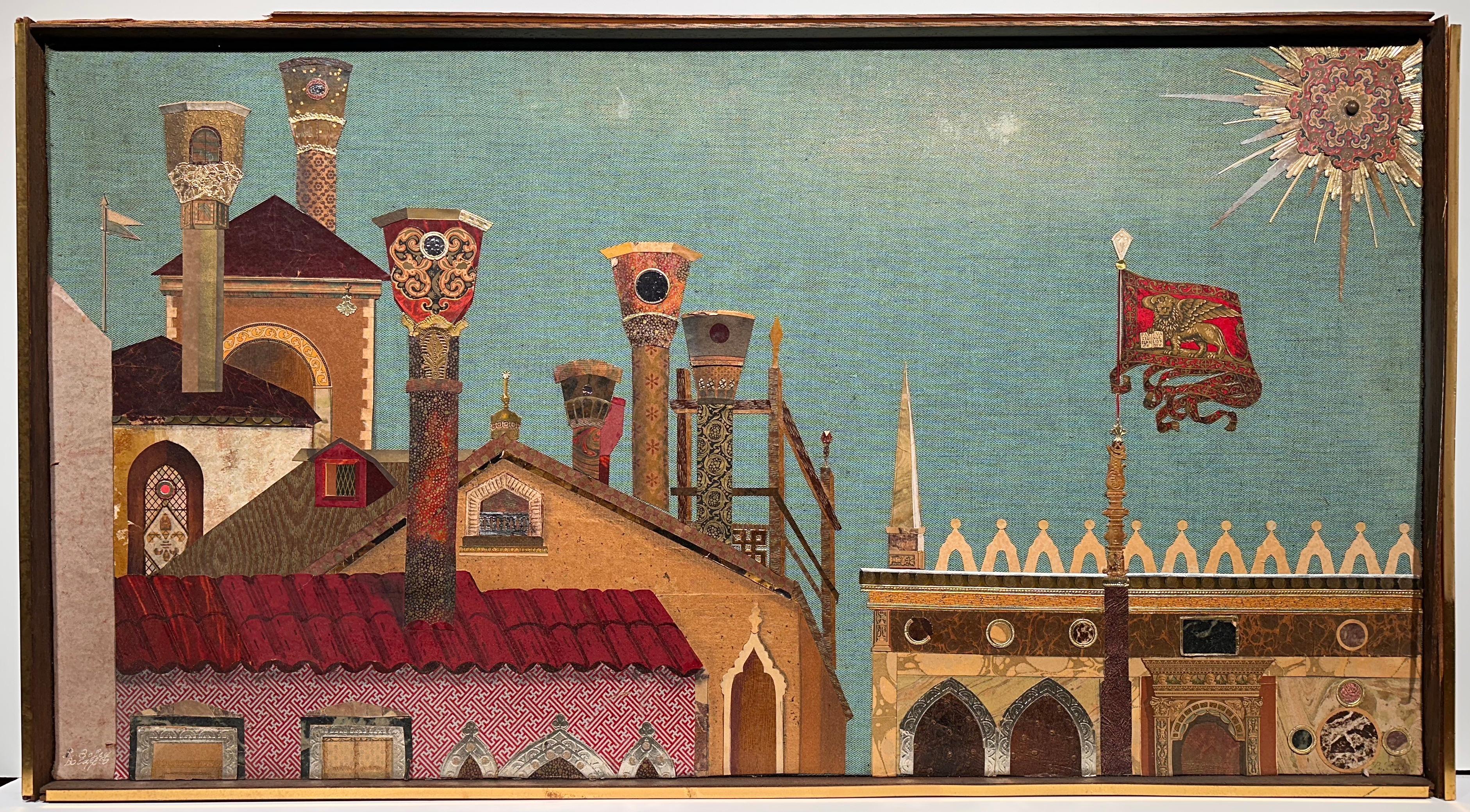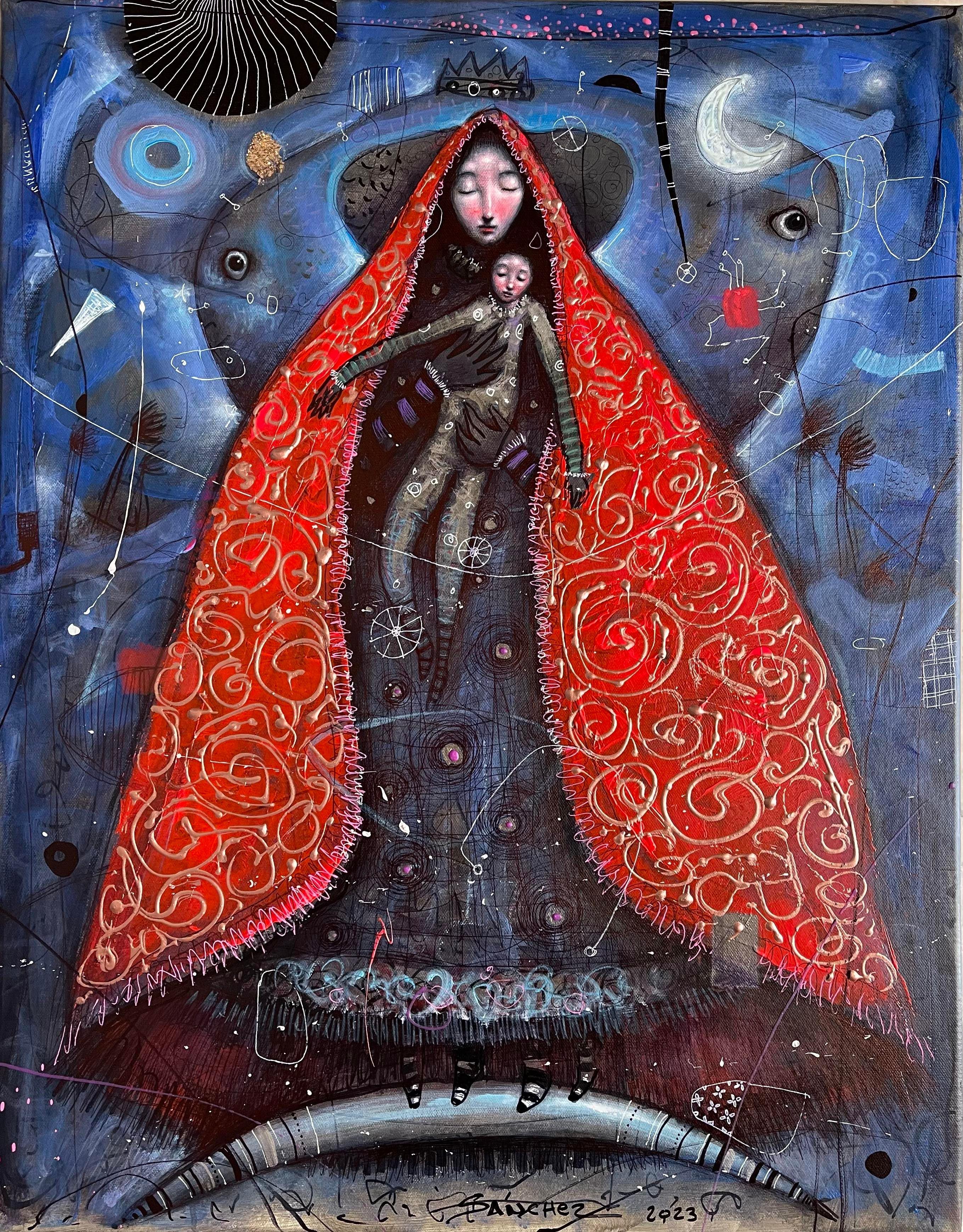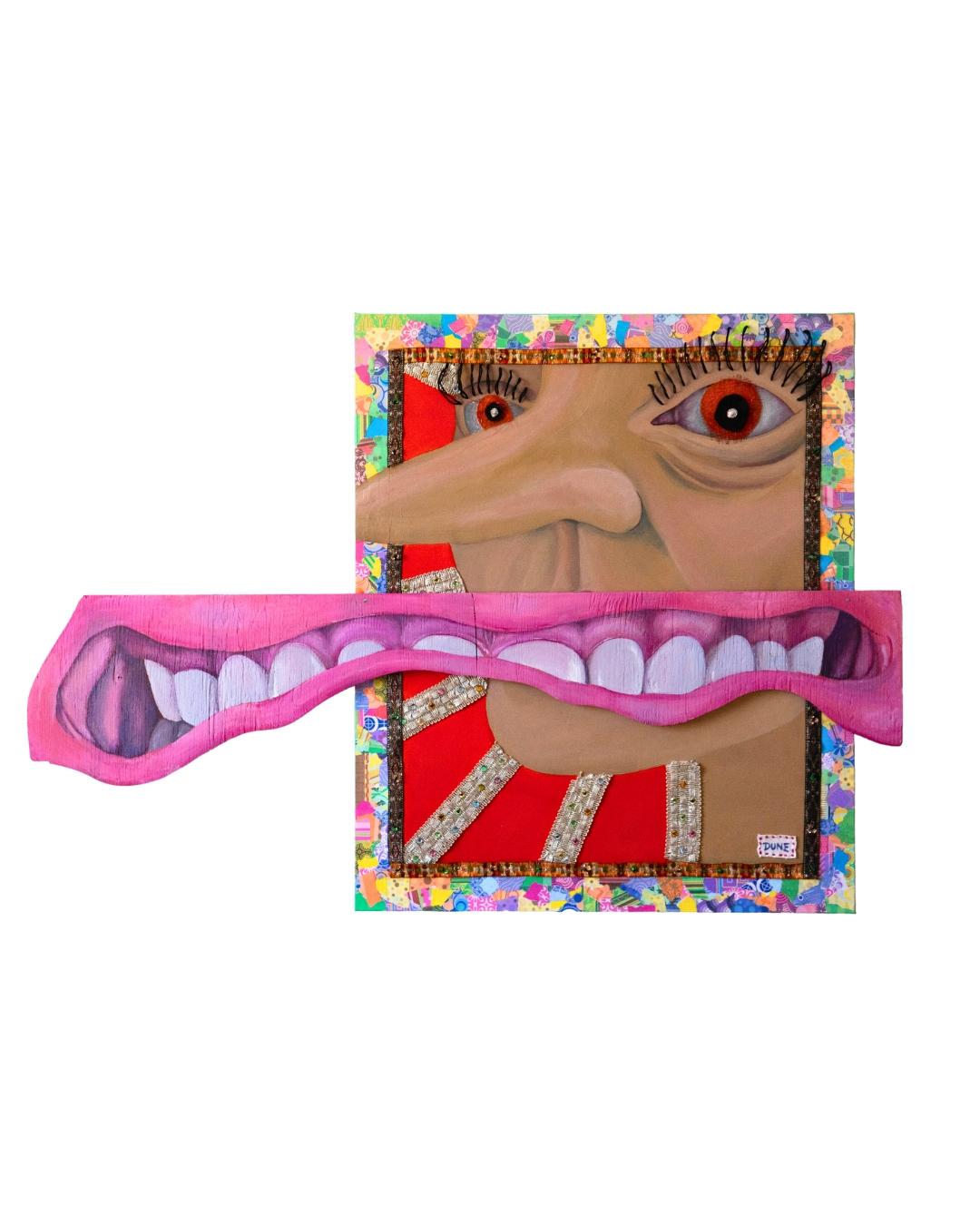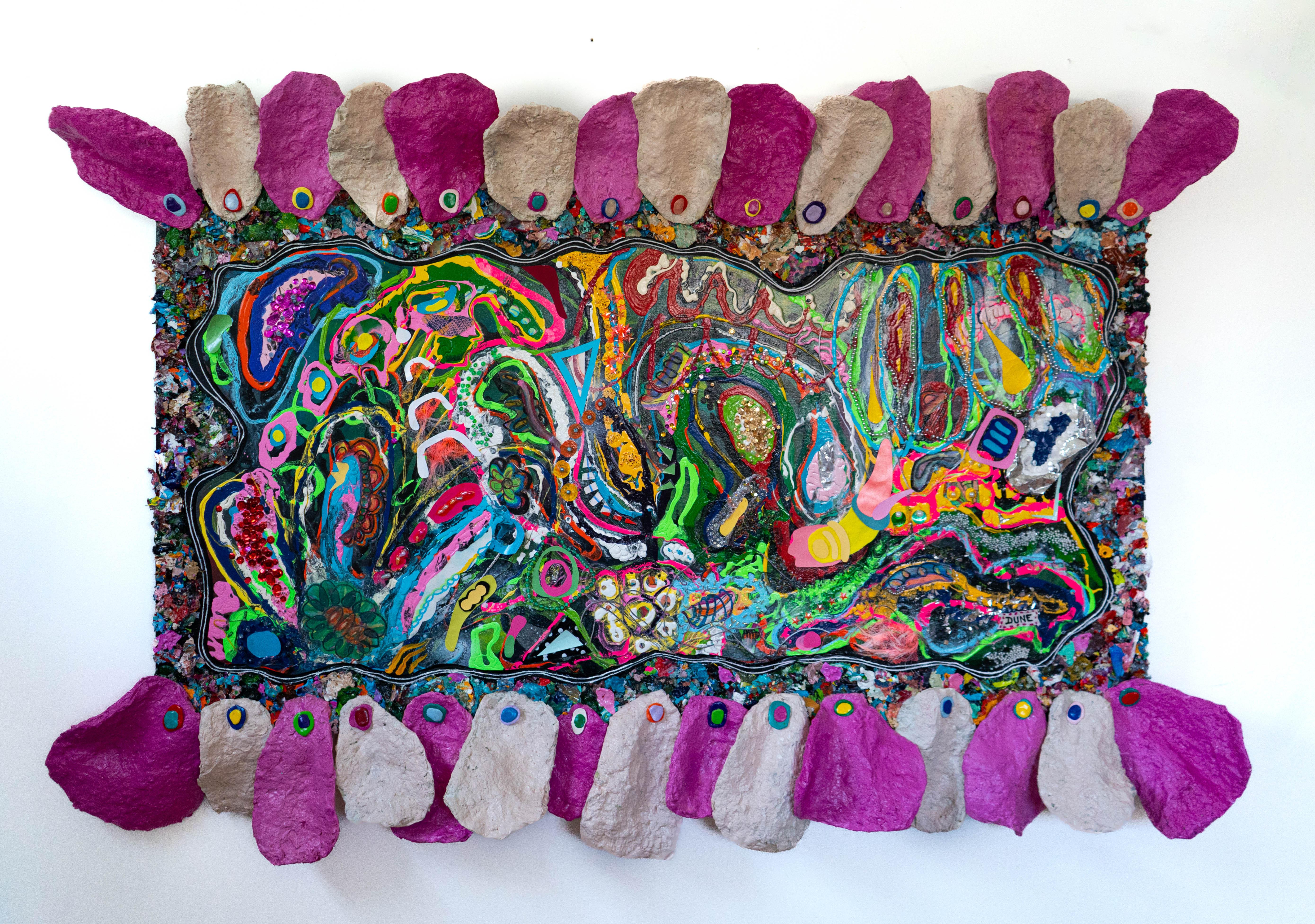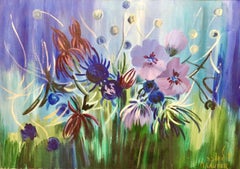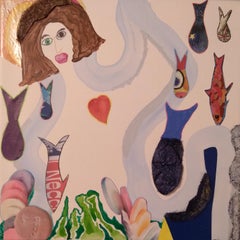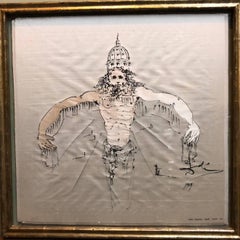
(after) Dali Rare Unusual Surrealist Silk Tapestry Weaving From Italy 1950
View Similar Items
Want more images or videos?
Request additional images or videos from the seller
1 of 6
(after) Salvador Dali(after) Dali Rare Unusual Surrealist Silk Tapestry Weaving From Italy 19501950
1950
About the Item
- Creator:(after) Salvador Dali (1904 - 1989, Spanish)
- Creation Year:1950
- Dimensions:Height: 26.5 in (67.31 cm)Width: 27.5 in (69.85 cm)
- Medium:
- Movement & Style:
- Period:
- Condition:frame has some wear.
- Gallery Location:Surfside, FL
- Reference Number:1stDibs: LU3822442341
About the Seller
4.9
Platinum Seller
These expertly vetted sellers are 1stDibs' most experienced sellers and are rated highest by our customers.
Established in 1995
1stDibs seller since 2014
1,549 sales on 1stDibs
Typical response time: 1 hour
More From This SellerView All
- European Collage Cubist Oil Painting 1960 Surrealist Interior with Vase and PipeLocated in Surfside, FLWonderful mid century, signed (illegibly) and dated. I believe it is German or Austrian but not certain. It is an assemblage of textures and materials collaged together, done in bright jewel tones. Avant Garde painting...Category
1960s Surrealist Interior Paintings
MaterialsCanvas, Felt, Mixed Media, Oil, Laid Paper
- French Mod Surrealist Commedia dell'arte Circus Scene Oil Painting J.P. SerrierBy Jean Pierre SerrierLocated in Surfside, FLJean Pierre Serrier (French, 1934-1989) Oil on canvas painting depicting four figures Hand signed lower right. Measures (frame) 26.5" x 30" wide, and (sight) 18.25." x 22.25" wide. Jean Pierre Serrier (1934 – 1989) was a French painter known for surrealism and absurdist art. Jean-Pierre Serrier was born in Montparnasse, Paris and attended the Académie des Beaux-Arts in Paris. the son of Louis and Solange Serrier. His father fought in World War II and became a prisoner of war. In 1940, as a six-year-old, he and his mother fled Paris for Corrèze in southwest France. Childhood memories of close escapes from German bombardments would later influence his absurdist philosophy of life. Passionate about drawing, in 1951 he applied and was admitted to the École nationale supérieure des arts appliqués et des métiers d'art in Paris. He shared an attic apartment in the 16th arrondissement with fellow student Jean-Baptiste Valadié. For income, he decorated shop windows. A trip to Spain provided motifs for early works. His student work might be characterized as art naïf (Naive art). While still a student, he sold a ceramic artwork to the poet and publisher Pierre Seghers, who would later commission drawings from him. He frequented jazz clubs in Saint-Germain des Près, and while listening to Sidney Bechet at the Vieux Colombier, he met his wife, Yvette.One of the last French Surrealist and follower of Nietzsche. His art conveyed the message to all of mankind that we are only human. The other Surrealist to center his art in philosophy was Rene Magritte whose paintings reflect his understanding of Sigmund Freud. He had his first exhibition in 1955, before being sent to Algeria to complete his military service. After graduating in 1955, he was drafted for military service, spent time in Germany and Morocco, and was sent to the front lines of the Algerian War. In 1959 he exhibited works at two Parisian galleries and at Juan-les-Pins on the Côte d'Azur. From 1961, he exhibited annually at the Salon des Artistes Français. In 1962, the City of Paris purchased his painting Un dimanche In 1961, Serrier made his first visit to the United States to exhibit at a New York gallery. In 1975 and 1979, he had successful exhibitions in New Orleans, and his work was included in art and news magazines, including Time and Newsweek. Beginning in the 1950s, his works included stylized portraits similar in some ways to the "big eyes" art of Margaret Keane, though it is uncertain that either artist influenced the other. Keane painted children, and so did Serrier, sometimes from life, but Serrier’s models are usually somewhat older, though uniformly slender and with androgynous features. A gallery owner introduced Serrier to American collectors Edgar Garbisch and his wife, Bernice Chrysler (daughter of Chrysler founder Walter P. Chrysler), who had a particular interest in naïve art; they commissioned a series of portraits from Serrier. At the same time, he met Reine Ausset in Paris, who in 1961 invited him to New York to take part in an exhibition at Galerie Norval on 57th Street. The show also included work by Moïse Kisling, and the exhibition program explicitly linked the two artists, saying that Serrier, who considered Moise Kisling "the Master," had found his own technique, but "the same vision joins the grand Kisling to the young Serrier: plenitude of shapes, sureness of palette, precision in outlines." In the 1960s he began painting slender, young, androgynous figures in groups, set in sparse landscapes with suggestions of the surreal and sometimes wearing costumes of the Commedia dell'arte. In some of these paintings the eyes of the figures are completely black, a motif that would continue in his later work. In 1965, he exhibited at Forest and Reed Gallery in London. Also in 1965, he discovered the small town of Martel, and with his old roommate Jean-Baptiste Valadié purchased a house that they opened as the gallery La Licorne (The Unicorn) in 1967. Responding to the political upheavals of May 1968 in France, and following the advice of Geneva gallery owner Roger Ferrero, Serrier's work became increasingly complex, idiosyncratic, and surreal. Imagery included the Tower of Babel, bodies suspended in space, and crowds of people all dressed alike, with identical features and entirely black eyes. Mannequins, playing cards, nudes, and levitating orbs also figured in the work. In a nod to Magritte, his men sometimes wear bowler hats. Another influence may have been the works of the Franco-Belgian surrealist Gaston Bogaert (1918-2008). Serrier's first major exhibit of these works, in Geneva in 1971, was titled Le Réalisme Fantastique. (Magic Realism) In 1972, he was made a member of the Société du Salon d'Automne, under whose auspices he was invited by the Polish government to exhibit in Warsaw in 1973, as part of a cultural exchange across the Iron Curtain. In 1976, he served on the jury of the Salon d'Automne. In 1975, New Orleans gallery owner Kurt E. Schon brought his work to several cities in the United States. A copiously illustrated monograph in English, Surrealism and the Absurd: Jean Pierre Serrier, was published in 1977. Author Thomas M. Bayer wrote: Serrier's world is one where—to use Friedrich Nietzche's term—the "human herd animal" is being confronted with the overwhelming task of coping with the world, his solitude, and at times, his resignation in the face of its monstrous size and duration. It is a world where the characterless, "blind" man faces the institutions, rules and symbols that made him into the being he now is…But Serrier does not lose himself in this world he portrays. He never forgets the old French tradition, the "black" humor, à la Molière. This classical humor at times is more felt than seen, in a manner that can be terribly funny, because it is horrifying, laughable, poignant and always true. Serrier told a friend, "In each of my paintings there's a message of hope amid the crowd of stereotypical figures. It could be an escaping dirigible, or a nymphet who flees like a deer under the red and blue trees of paradise...Category
Mid-20th Century Surrealist Figurative Paintings
MaterialsOil, Canvas
- Israeli Large Vibrant Surrealist Flowers Oil PaintingBy Milia LauferLocated in Surfside, FLMilia Laufer, born Romania. From 1951 lived and worked in Safed. Together with her husband opened one of the earliest galleries in Israel, in Tiberias. Worked in watercolors and oils...Category
1950s Surrealist Still-life Paintings
MaterialsCanvas, Oil
- French Surrealist Abstract PaintingBy Georges DussauLocated in Surfside, FLGeorges DUSSAU est né le 14 Mars 1947, à Chalon-sur-Saône (France) Il vit et travaille à Mellecey (France) et à Mougins (France) 1962 - 1963 - 1964 - Ecole de dessin - Chalon-su...Category
20th Century Surrealist Abstract Paintings
MaterialsCanvas
- Atlantis, Large Surrealist Oil Painting. Viennese Fantastic RealismBy Peter KolinLocated in Surfside, FLAtlantis, A large spectacular nautical, marine magic fantasy. (without the frame it is 32X39 inches) The roots for Peter Kolin’s fascinating world of Surrealist Fantasy, Magic Realist images can be traced back to the art of Mannerism, a brief period - approximately 1520 to 1610 - between the Renaissance and Age of the Baroque. In Mannerist paintings composition had no focal point and space could be ambiguous. Surreal figures could be characterized by athletic bending and twisting with distortions, exaggerations, elastic elongation of the limbs, bizarre or graceful posturing and the rendering of the heads as uniformly small and oval. (reminds me very much of some of the compositions of Salvador Dali) The composition was full of clashing symbolist colors very unlike the balanced, natural and often dramatic colors of the High Renaissance. Mannerist works presented instability and restlessness and also showed a fondness for allegories with lascivious undertones. Kolin, an exceptionally gifted painter within this tradition, creates gorgeous and mysterious fantasies of Surrealism with each work opening a new and more exciting fantastic world. His narrative world of images and symbols is presented in his own metaphorical language but with a visual accuracy solidly rooted in technical perfection. Today Kolin is a widely acclaimed artist of the Vienna School of Fantastic Realism. (Together with, Arik Erich Brauer, Ernst Fuchs, Rudolf Hausner...Category
1980s Surrealist Figurative Paintings
MaterialsCanvas, Oil
- Large Surrealist Symbolist Painting, Peeking Child, Moorish Architectural ArchesBy Baruch ElronLocated in Surfside, FLLarge Surrealist Symbolist Painting With a peeking, peering figure of a child dressed in red in a typical Middle Eastern Architectural setting. (unframed 28.75X39.5 inches) Baruch Elron (1934–2006) was an Israeli painter best known for his unique Fantastic Realist style rich in symbols and allegories. Baruch Elron (Barbu Teodorescu) was born in Bucharest, in a family of Sephardic Jews. Baruch Elron studied Painting at the Nicolae Grigorescu Fine Arts Academy in Bucharest. Among his teachers were the great artists Corneliu Baba...Category
20th Century Surrealist Figurative Paintings
MaterialsCanvas, Oil
You May Also Like
- And it Came to Pass : collage work of artLocated in New York, NYCollage work of art by contemporary artist Jessica Rechner. This work of art is a collage made raw silk, acrylic, watercolor, and pencil on canvas. The artist uses these various mat...Category
2010s Surrealist Mixed Media
MaterialsCanvas, Silk, Acrylic, Watercolor, Pencil
- Chroessi Schnell - "Y 2 US" - surrealist abstract forms of a dreamLocated in Winterswijk, NLChroessi Schnell - "Y 2 US". Surrealism, abstract forms, dream universe. This work is inspired by the sad story of the environment until today. Fading eco-systems, more and more co...Category
21st Century and Contemporary Surrealist Drawings and Watercolor Paintings
MaterialsCanvas, Mixed Media
- Chroessi Schnell - "The turning point" - surrealist abstract forms of a dreamLocated in Winterswijk, NLChroessi Schnell - "The turning point". Surrealism, abstract forms, dream universe. Mixed techniques: acryl painting, plaster, metal and varnish. Mixed Media on canvas and signed....Category
21st Century and Contemporary Surrealist Drawings and Watercolor Paintings
MaterialsCanvas, Mixed Media
- Cheerleader 1Located in Ibadan, OyoAlways be your BIGGEST cheerleader, first. Remember to stay true to yourself and have faith in yourself. Even on difficult days, never give up on making your dreams happen. Go after ...Category
21st Century and Contemporary Surrealist Figurative Paintings
MaterialsCanvas, Oil, Acrylic
- In My SolitudeLocated in Ibadan, OyoNudity in art has historically been a contentious subject, often raising questions about beauty standards, objectification, and the human form. In "In My Solitude," however, Edwin treats nudity with sensitivity and purpose. The nude figure, devoid of clothing and external trappings, serves as a metaphor for vulnerability and raw authenticity. It becomes a powerful statement on embracing one's true self, stripped of societal expectations and external judgments. The choice of the yoga position is not arbitrary in Edwin's composition. Yoga has long been associated with self-discovery, inner peace, and spiritual enlightenment. The woman's serene posture exudes a sense of calmness and introspection. Through this position, Edwin suggests that solitude and self-reflection are integral to personal growth and inner strength. It encourages viewers to embrace moments of introspection and find solace in their own thoughts, ultimately leading to a deeper understanding of themselves. Edwin's meticulous attention to detail and symbolism further enriches the narrative of "In My Solitude." The subtle play of light and shadow highlights the contours of the woman's body, accentuating the vulnerability and emotional depth captured in the artwork. The artist's skillful brushwork evokes a sense of intimacy, drawing the viewer into the private world of the subject. The title itself, "In My Solitude," adds an additional layer of meaning. Solitude, often associated with loneliness, is reimagined as a source of inner strength and self-discovery. Edwin invites viewers to contemplate the transformative power of spending time alone, away from distractions and truly connecting with oneself. Crixtover Edwin...Category
21st Century and Contemporary Surrealist Figurative Paintings
MaterialsCanvas, Charcoal, Mixed Media, Oil, Acrylic
- Draw Us Into LoveLocated in Ibadan, OyoShipping Procedure Ships in a well-protected tube from Nigeria This work is unique, not a print or other type of copy. Accompanied by a Certificate of Authenticity (Issued by the Gallery) About Artist Afeez Aregbede...Category
21st Century and Contemporary Surrealist Figurative Paintings
MaterialsCanvas, Oil, Acrylic
